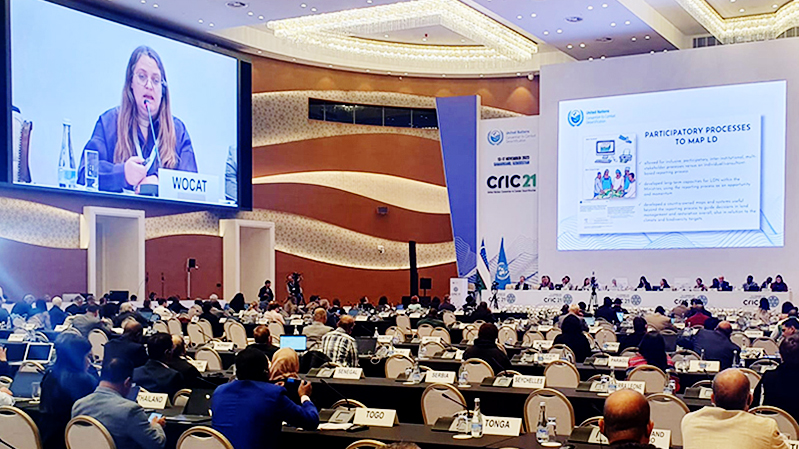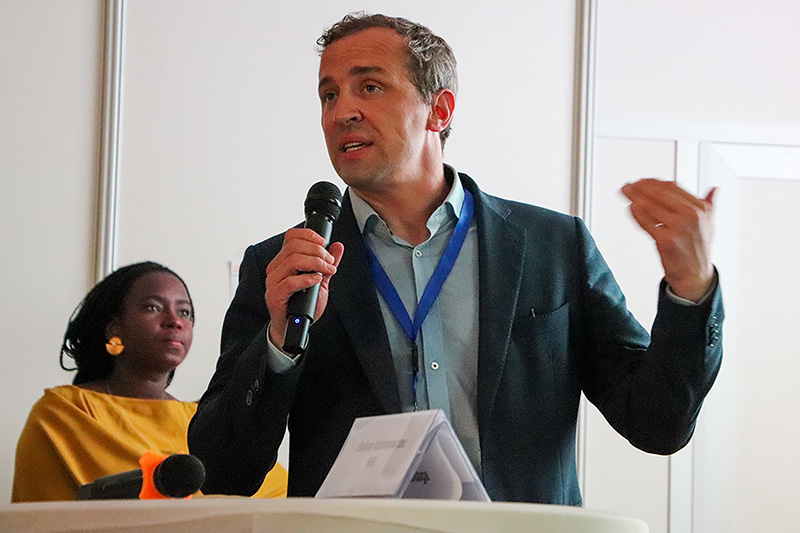Blue Nile
Tonnes of fertile soil are washed away: The Blue Nile during the rainy season. Photo: Tatenda Lemann

From 13 to 17 November 2023, a CDE/WOCAT team organized and contributed to various side events at the 21st session of the Committee for the Review of the Implementation of the United Nations Convention to Combat Desertification (UNCCD) in Samarkand.
Back in October, the UN Convention to Combat Desertification (UNCCD) announced: “If current trends persist, we will need to restore 1.5 billion hectares of degraded land by 2030”. Then, in November, the UNCCD’s Committee for the Review of the Implementation of the Convention (CRIC) met to discuss the status and achievement reports of individual signatory countries.
On behalf of WOCAT, the UNCCD’s official partner for sustainable land management (SLM), two CDE scientists organized and contributed to nine side events together with other WOCAT members. These activities aimed to showcase WOCAT’s efforts to help countries improve their monitoring and reporting on “land degradation neutrality”. Core elements of WOCAT’s achievements include promoting SLM, fostering South–South cooperation, advancing integrated land use planning, and linking land tenure and gender considerations to specific SLM practices.

During the conference’s interactive plenary discussion, land degradation neutrality expert and CDE/WOCAT team member Ingrid Teich shared insights gained from WOCAT’s rich experience in providing technical assistance on land degradation monitoring and reporting in pilot countries across the globe.

In a separate interview, Tatenda Lemann, CDE scientist and member of WOCAT’s executive team, explained the role of our team in Samarkand. He stressed the importance of preventing land degradation, reducing erosion, and restoring soils. According to Tatenda Lemann, “our top priority must be to make sure that erosion doesn’t even begin to develop.”
Tonnes of fertile soil are washed away: The Blue Nile during the rainy season. Photo: Tatenda Lemann